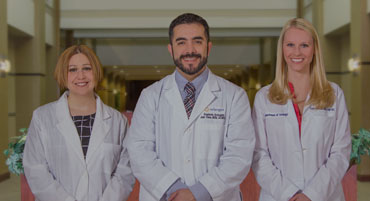Sperm Retrieval in Nashville & Chattanooga, TN
What is Sperm Retrieval?

Sperm may be retrieved from the testis or epididymis, for immediate use or to be frozen for later use with IVF. The type of sperm retrieval technique, site of sperm retrieval (testis or epididymis), and the decision to use fresh versus cryopreserved sperm depends largely upon the reproductive surgeon, the reproductive lab personnel and your preferences. Currently, there is no agreement within the reproductive specialist community on which retrieval technique or sperm source is superior. The right decision for you and your partner will be made after a full evaluation of the couple has been performed by the male and female reproductive specialists.
Click to Call Dr. Shrid Today to Learn More
When Would I Need or Want to Undergo Sperm Retrieval?
Usually sperm is retrieved in the following situations:
- Impaired maturation or production of sperm or “non-obstructive azoospermia”.
- You have an obstruction in your reproductive organs that causes infertility or “Obstructive Azoospermia” e.g. vasectomy, absence of the vas deferens
- You have very small amounts of sperm in the ejaculate that are found to be poor in quality.
- Prior to cancer treatment, chemotherapy or radiation, that may render you sub-fertile.
- At the time of vasectomy reversal or varicocele repair as a backup for treatment failure
What are the Success Rates of Sperm Retrieval?
In general, men with obstruction (OA) have higher retrieval rates, approaching 99%, and pregnancy rates approaching 67% when compared to men with impaired production/maturation (NOA). This is due to multiple factors, but the overwhelming reason is that men with OA are more likely to produce normal amounts of motile sperm whereas the maturity of the sperm in patients with NOA can be mixed. Retrieval rates for NOA overall approach 30 percent, and 65% in men with NOA and Klinefelter’s syndrome. The retrieval rates overall are dependent on the reproductive surgeon, andrologist examining the retrieved tissue during the procedure and the method by which the sperm is retrieved.
Types of Sperm Retrieval
Types of Sperm Retrieval for Men with a Blocked System (OA)
- Testicular sperm extraction (TESE)
- Testicular sperm aspiration (TESA)
- Percutaneous sperm aspiration (PESA)
- Microsurgical epididymal aspiration (MESA)
Types of Sperm Retrieval for Men with Impaired Sperm Production or Maturation (NOA)
- Testicular sperm aspiration (TESA)
- Microsurgical testicular sperm extraction (MicroTESE)
How Long is the Sperm Retrieval Procedure?
There are a few different options for sperm retrieval. The most conservative techniques may take just a few minutes to perform. For sperm retrieval procedures that are performed using general anesthesia, patients may be at the hospital or surgical center for a few hours. This includes the time that it takes to recover from the anesthesia before being released to a reliable loved one.
How Many Sperm Are Needed for IVF?
It only takes one sperm to fertilize a mature, healthy egg. That said, the number of sperm that are needed in IVF may depend on the technique that the IVF specialist decides to perform. Standard insemination, in which sperm are added to a petri dish of select eggs, requires thousands of sperm of good motility. Dr. Shridharani can discuss the number of sperm he expects to retrieve using the technique that is selected for you.
How is Retrieved Sperm Used in IVF?
The IVF process follows precise steps to strive for successful fertilization. After obtaining eggs from the mother, the IVF team analyzes them for maturity. The best eggs are placed into an incubator that mimics the mother’s internal environment. The sperm that are retrieved may be added to this environment, where natural fertilization will take place. If your sperm have low motility or you have a low sperm count, the doctor may inject multiple eggs with a single sperm each to achieve fertilization. This technique is called intracytoplasmic sperm injection (ICSI).
What Type of Anesthesia is Used During Sperm Retrieval?
You can expect to receive either local anesthesia or general anesthesia for your sperm retrieval procedure. It depends on the technique that is selected for you based on the nature of the obstruction or impaired production. After your consultation and relevant tests, Dr. Shridharani can discuss the type of sperm retrieval that would be most efficient.
TESA
Testicular Sperm Aspiration (TESA) is a minimally invasive method of sperm retrieval that can be performed in the office. Under local anesthesia sperm is retrieved directly from the testis. Pregnancy rates of up to 62%, and live delivery rates up to 50% can be expected, if you have a blockage. This type of sperm retrieval can be performed in patients with a blockage or impaired sperm production. Usually this technique requires an embryologist with training and experience in identifying small amounts of sperm for immediate use or for freezing for later use. If adequate amounts of sperm are not retrieved, more thorough retrieval techniques like MicroTESE may be pursued.
PESA
Percutaneous Epididymal Sperm Aspiration is another minimally invasive method of sperm retrieval. After a local anesthetic is given, the sperm is retrieved from the epididymis. This procedure can be performed in the office, is less invasive than MESA/TESE and does not require microscopic magnification. Unlike TESA, this procedure is appropriate only in men who are blocked (OA).
MESA
Microsurgical epididymal sperm aspiration (MESA) involves obtaining sperm from a small tubule in the epididymis under an operating microscope. The procedure is indicated in men who have a blockage due to a failed vasectomy reversal, men who are missing the vas deferens on both sides, men who do not wish to get a vasectomy reversal, or for men who have blockages in their epididymis that cannot be surgically corrected. Men who cannot ejaculate may be candidates as well. The procedure is not performed in men who have non-obstructive causes of azoospermia, such as varicoceles, or testicular failure.
This procedure requires microscopic magnification and a trained microsurgeon experienced in accessing the epididymis for sperm and reconstruction. Obtaining sperm from the epididymis may also be performed at the time of vas reconstruction. This procedure requires a general anesthetic and is an outpatient procedure.
TESE
Testicular sperm extraction (TESE) or open biopsy of the testicular tissue may be utilized in cases of OA; however its use is more commonplace for the diagnosis and treatment of non-obstructive azoospermia (NOA). Other techniques have proven more successful and reliable. This is usually not recommended as a first line retrieval method but may be used with other fertility procedures such as varicocele repair.
MicroTESE
Microdissection Testicular Sperm Extraction (MicroTESE) is performed in men with impaired sperm production (NOA) and offers the best retrieval rate compared to TESA, and TESE. The average retrieval rate is about 30%, averaged over all reasons for impaired sperm production and maturation, and about 65% for men with Klinefelter’s Syndrome.
The procedure is an outpatient procedure performed under a general anesthetic. Usually the larger of the two testes is opened under an operating microscope. The tubules are then systematically examined for the characteristic size and appearance for sperm production. The tubules are also examined under a microscope by the embryologist, in the operating room, who further assists in localizing the small amounts of sperm necessary for IVF. If no sperm is identified, the testis is closed and the other testis is opened and examined. However, the likelihood of finding sperm on the other side is about 10%.
MicroTESE remains the gold standard for sperm retrieval in men with NOA. Success rates usually vary by reproductive surgeon, embryologist, and IVF facilities.
Schedule an Appointment with Dr. Shridharani
Recovery After the Sperm Retrieval Procedure
All retrieval techniques are performed on an outpatient basis, either in a hospital, ambulatory surgical care center or office setting. Patients often resume their normal activities on the following day after percutaneous retrievals, and after 2-3 days following open surgical retrievals. A scrotal support should be worn for several days following the procedure to prevent scrotal edema and pain. No strenuous activity is recommended for 7-10 days. Patients should refrain from sexual activity for a weeks as well. All patients are given oral narcotics and are to take scheduled anti-inflammatories like ibuprofen or sodium naproxen for two weeks.
Is it Better to Use Fresh Sperm or Cryopreserved Sperm (Frozen) for IVF?
This topic has been debated heavily since the early 90’s. The bottom line is that if the IVF facility is comfortable using frozen sperm then fertilization and pregnancy rates should be equivalent. Using frozen sperm in the setting of NOA is particularly beneficial. For example, if fresh sperm retrieval and use is planned for IVF and the retrieval in cycle is unsuccessful, the IVF cycle, with all its cost, and morbidity, will be for nothing since there is no sperm to use. Ultimately, the decision of which type of sperm to use for IVF should be determined by the embryologist and female reproductive specialist.
Dr. Shridharani will guide you through the process, and with the female reproductive specialists, determine which retrieval method would best suit you and your partner to facilitate pregnancy. Dr. Shridharani is primarily a male reproductive surgeon and his practice is devoted to assisting couples get pregnant through medicine and surgery. He is a high volume microsurgeon and is comfortable performing any and all procedures to retrieve sperm for use with IVF. He has authored a chapter on Sperm Retrieval Techniques in Microsurgery for Fertility Specialists: A Practical Text, and has conducted several studies on sperm retrieval that have been presented at several national meetings including the AUA and ASRM Annual Meetings.
Of the utmost importance, Dr. Shridharani will counsel you on all of the options and help find the treatment option for you that is cost-effective and agreeable to you and your partner. We understand that the journey to get pregnant when infertile can be particularly frustrating due to its lack of predictability and the patience required with the process. Therefore, we promote involvement in all aspects of the decision-making process and we find this empowers couples and improves satisfaction overall.
For more information on sperm retrieval call (423) 778-4MEN (4636) or visit our contact us page to schedule an appointment with Dr. Shridharani today! Our practice serves Chattanooga and Nashville TN, Northern Georgia, and Huntsville, AL.


